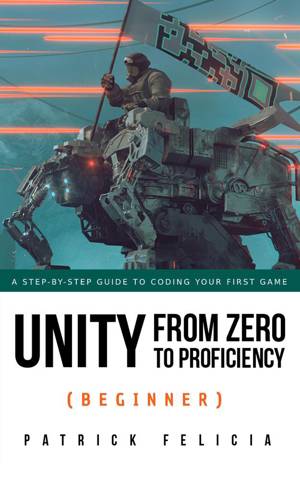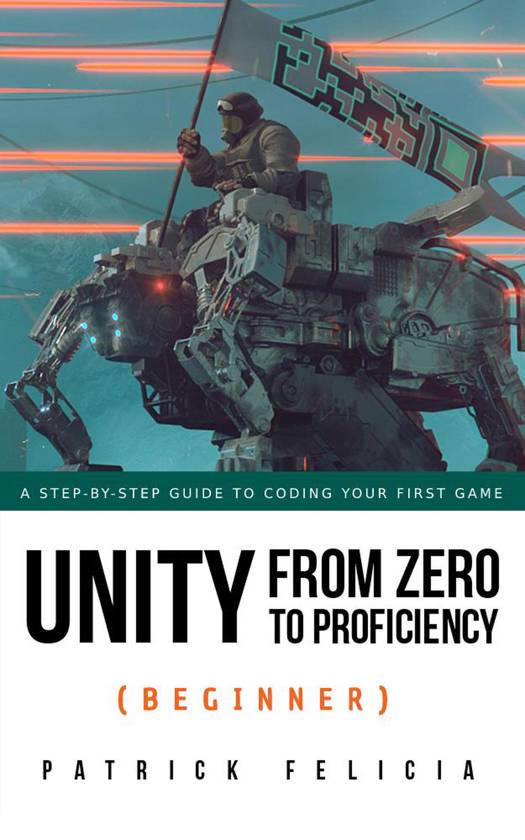
Door een staking bij bpost kan je online bestelling op dit moment iets langer onderweg zijn dan voorzien. Dringend iets nodig? Onze winkels ontvangen jou met open armen!
- Afhalen na 1 uur in een winkel met voorraad
- Gratis thuislevering in België vanaf € 30
- Ruim aanbod met 7 miljoen producten
Door een staking bij bpost kan je online bestelling op dit moment iets langer onderweg zijn dan voorzien. Dringend iets nodig? Onze winkels ontvangen jou met open armen!
- Afhalen na 1 uur in een winkel met voorraad
- Gratis thuislevering in België vanaf € 30
- Ruim aanbod met 7 miljoen producten
Zoeken
€ 9,99
+ 9 punten
Omschrijving
Creating your own game can be very intimidating at the start, and quite often, regardless of your experience with games, it is sometimes difficult to find the time and motivation to get over the first barriers and to get started. Often, these barriers seem higher than they actually are. Maybe you are a teacher trying to introduce games in your classroom or a parent trying to help your child with coding, but with no previous coding or game development experience; maybe you are a hobbyist who would love to create interactive environments based on your favorite games; maybe you are a student getting started with game development but you just don't know where to start or what resources to use; or maybe you have tried online video tutorials but found them disjointed. You may be wondering: "How can I start to create my games if I have no experience of coding," or "this game engine is so complex that I just don't know where to get started." This is quite common, and you can easily overcome these issues with a step-by-step approach that gets you to progressively develop and use your skills. This is the approach that I have used successfully over the past years to take students from no knowledge of coding or game development to good levels of proficiency in Unity and coding. Of course, it takes some time and dedication; however, by following the techniques and suggestions described in this book, I can promise you that you will progress, regardless of your background, and become more comfortable with Unity and coding. Content and structure of this book When you purchase this book, you get: - An easy-to-read format that uses a conversational style - 250+ pages of step-by-step instructions using a tried-and-tested method - Plenty of explanations and pictures (more than 80 pictures) to complement the text - Access to the author by email if you have any question - A 1-hour introduction video - 8 additional video tutorials (50+ minutes in total) to help you with the most challenging topics covered in the book - Weekly updates on new topics - A list of the learning objectives at the start of each chapter. - Step-by-step activities. - Opportunities to engage in deeper learning and problem-solving skills through challenges at the end of each chapter. - Quizzes to test your knowledge (with associated solutions). - Full project and code solutions (in JavaScript and C#) for each chapter. - Printable cheat-sheets for shortcuts, and best coding practice. The content of each chapter is as follows: - Chapter 1 gives an introduction to JavaScript and to core principles that will help you to get started with coding. You will learn key programming concepts such as variables, variable types, or functions. - Chapter 2 helps you to code your first script. You will learn how to code following best coding practices, debug your code, and also avoid common errors. - Chapter 3 gets you to improve your scripting skills, enhance your game and add more interaction. You will learn to implement a scoring system, to detect collisions, and to load new levels. - Chapter 4 explains how you can create and update a user interface for your game (e.g., displaying images and messages onscreen) using scripting. - Chapter 5 explains how you can polish-up your game. You will add a splash-screen, a simple inventory system, sound effects, as well as a mini-map. - Chapter 6 explains how to add Non-Player Characters (NPCs) with Artificial Intelligence (AI). You will configure each NPC and get them to either follow the player or walk along a simple path of your choice, and also detect collision with them. - Chapter 7 provides answers to Frequently Asked Questions (FAQs) (e.g., scripting, audio, AI, or user interface)
Specificaties
Betrokkenen
- Auteur(s):
- Uitgeverij:
Inhoud
- Aantal bladzijden:
- 202
- Taal:
- Engels
- Reeks:
Eigenschappen
- Productcode (EAN):
- 9781522907701
- Verschijningsdatum:
- 27/03/2019
- Uitvoering:
- E-book
- Formaat:
- ePub
- Afmetingen:
- 216 mm x 279 mm
- Gewicht:
- 662 g

Alleen bij Standaard Boekhandel
+ 9 punten op je klantenkaart van Standaard Boekhandel
Beoordelingen
We publiceren alleen reviews die voldoen aan de voorwaarden voor reviews. Bekijk onze voorwaarden voor reviews.











